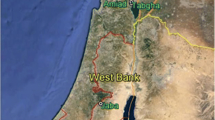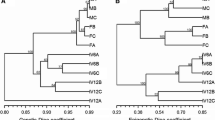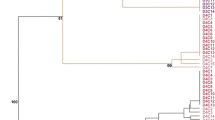Abstract
The genetic incompatibility of the seedlings which are used as rootstocks (stock–scion interactions) and the mechanical stress induced by grafting are two major factors responsible for the high intraclonal variations observed in tree crops which are propagated through bud grafting. Since stress-induced DNA methylation changes associated with heterografting is a major contributor of such variations in grafted tree crops, a proper assessment of this epigenetic phenomenon is inevitable to devise strategies for the development of more uniform planting materials with minimal intraclonal variations in the future. In order to evaluate and establish the effects of heterografting on the epigenome of plants, availability of ideal plant materials and a standard procedure for testing is very essential. Development of genetically uniform own-rooted seedlings through induction of cleavage polyembryony by a novel technique of half ovulo embryo culture is the first step. Grafting of buds from these genetically and epigenetically uniform plants to genetically divergent rootstock and identification of DNA methylation polymorphism among them forms the second part of the methodology for detecting epigenetic changes associated with grafting in tree crops. Methylation-sensitive amplification polymorphism technique (MSAP), a modified version of AFLP using a pair of methylation-sensitive and insensitive isoschizomers (such as HpaII and MspI), is an ideal methodology to assess DNA methylation polymorphisms on a genomic scale in such plants. Comparative analysis of two sets of restriction digestion products (EcoRI/HpaII and EcoRI/MspI) allows the identification of DNA methylation polymorphisms induced by grafting and will aid in the detection of differentially methylated regions (DMRs) among grafted plants. This chapter describes a detailed protocol for inducing multiple embryos of single zygotic origin and regeneration of seedlings in rubber tree (Hevea brasiliensis), grafting of buds from these genetically uniform own-rooted seedlings to divergent rootstocks, identification of epigenetic changes induced by grafting or stock–scion interactions through MSAP analysis, and locating the differentially methylated genomic region. The methodology described here could be applied to any tree species commercially propagated through grafting for detecting epigenetic changes putatively associated with intraclonal variability.
Access this chapter
Tax calculation will be finalised at checkout
Purchases are for personal use only
Similar content being viewed by others
References
Uthup TK, Rekha K, Ravindran M et al (2018) Heterografting induced DNA methylation polymorphisms in Hevea brasiliensis. Planta 248:579–589
Reyna-Lopez GE, Simpson J, Ruiz-Herrera J (1997) Differences in DNA methylation patterns are detectable during the dimorphic transition of fungi by amplification of restriction polymorphisms. Mol Gen Genet 253:703–710
Marfil CF, Camadro EL, Masuelli RW (2009) Phenotypic instability and epigenetic variability in a diploid potato of hybrid origin, Solanum ruiz-lealii. BMC Plant Biol 9:21
Verhoeven KJF, Jansen JJ, van Dijk PJ et al (2010) Stress-induced DNA methylation changes and their heritability in asexual dandelions. New Phytol 185:1108–1118
Rekha K, Lincy A, Jayashree R et al (2012) Half ovulo embryo culture –an ideal method for raising true-to-type seedlings in Hevea brasiliensis. In: International rubber conference, Oct. 29–31, Kovalam, Kerala, India, pp 89–90
Fulnecek J, Matyasek R, Kovarik A et al (1998) Mapping of 5-methylcytosine residues in Nicotiana tabacum 5S rRNA genes by genomic sequencing. Mol Gen Genet 259:133–141
Muzik TJ (1956) Studies on the development of the embryo and seed of Hevea brasiliensis in culture. Lloydia 19:86–91
Nitsch P, Nitsch C (1969) Haploid plants from pollen grains. Science 163:85–87
Rekha K, Uthup TK, Sobha S et al (2015) Genetic and epigenetic uniformity of polyembryony derived multiple seedlings of Hevea brasiliensis. Protoplasma 25:783–796
Murashige T, Skoog F (1962) A revised medium for rapid growth and bioassays with tobacco tissue cultures. Physiol Plant 15:473–497
Rekha K, Jayashree R, Gireesh T et al (2010) Embryo rescue and plant regeneration in Hevea brasiliensis. Nat Rubber Res 23:147–154
Saha T, Roy B, Nazeer MA (2005) Microsatellite variability and its use in the characterization of cultivated clones of Hevea brasiliensis. Plant Breed 124:86–92
Mercykkutty VC (2008) Rubber nursery: a practical guide. Malayalam book. Rubber Research Institute of India, Rubber Board, Kottayam, p 95
Marattukalam JG, Mercikutty VC (2000) Propagation techniques. In: George PJ, Jacob CK (eds) Natural rubber agromanagement and crop processing. Rubber Research Institute of India, Rubber Board, Kottayam, pp 75–96
Acknowledgments
We thank Dr. James Jacob, Director, Rubber Research Institute of India for his constant encouragement and support at every stage of this work. Thanks are due to Dr. Mercykutty V C, Senior Scientist (Rtd.), Rubber Research Institute of India for providing the photographs on grafting method in Hevea. We also acknowledge the help rendered by Ms. Minimol Ravindran in preparing the manuscript and Ms. Krishna Priya S for the artwork.
Author information
Authors and Affiliations
Corresponding author
Editor information
Editors and Affiliations
Rights and permissions
Copyright information
© 2022 The Author(s), under exclusive license to Springer Science+Business Media, LLC, part of Springer Nature
About this protocol
Cite this protocol
Uthup, T.K., Karumamkandathil, R., Thuppale, M. (2022). Estimation of Heterografting Associated DNA Methylation Changes in Tree Crops by MSAP Analysis. In: Lambing, C. (eds) Plant Gametogenesis. Methods in Molecular Biology, vol 2484. Humana, New York, NY. https://doi.org/10.1007/978-1-0716-2253-7_17
Download citation
DOI: https://doi.org/10.1007/978-1-0716-2253-7_17
Published:
Publisher Name: Humana, New York, NY
Print ISBN: 978-1-0716-2252-0
Online ISBN: 978-1-0716-2253-7
eBook Packages: Springer Protocols




